The walk entitled Masterpieces with a view created by the National Hauszmann Program visits the works of Gyula Benczúr, Tivadar Csontváry Kosztka, Viktor Madarász and other famous artists as its weaves through the palace complex touching on interesting facts and famous events from the history of the palace complex.
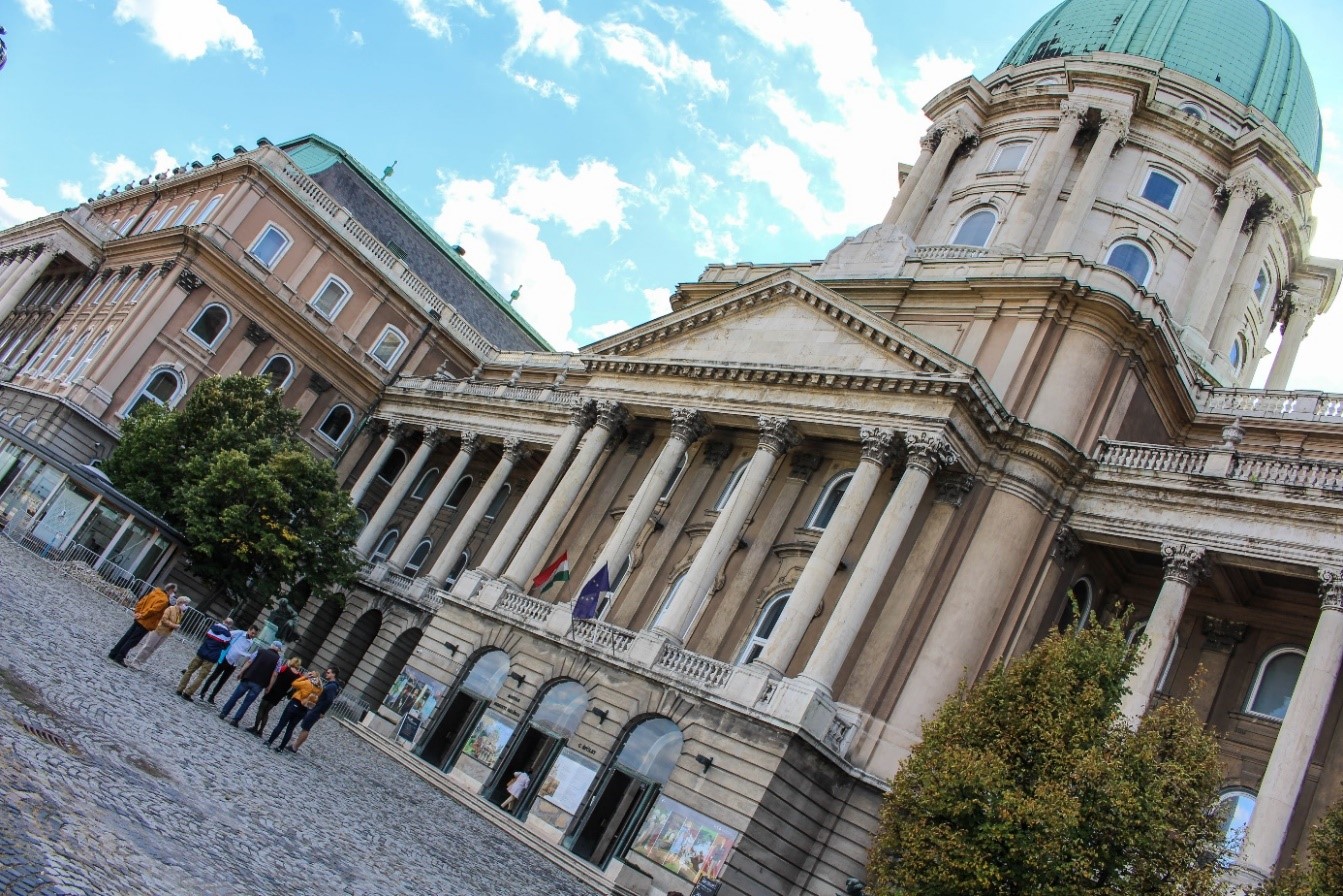 Participants gather for the tour (Photo: pestbuda.hu)
Participants gather for the tour (Photo: pestbuda.hu)
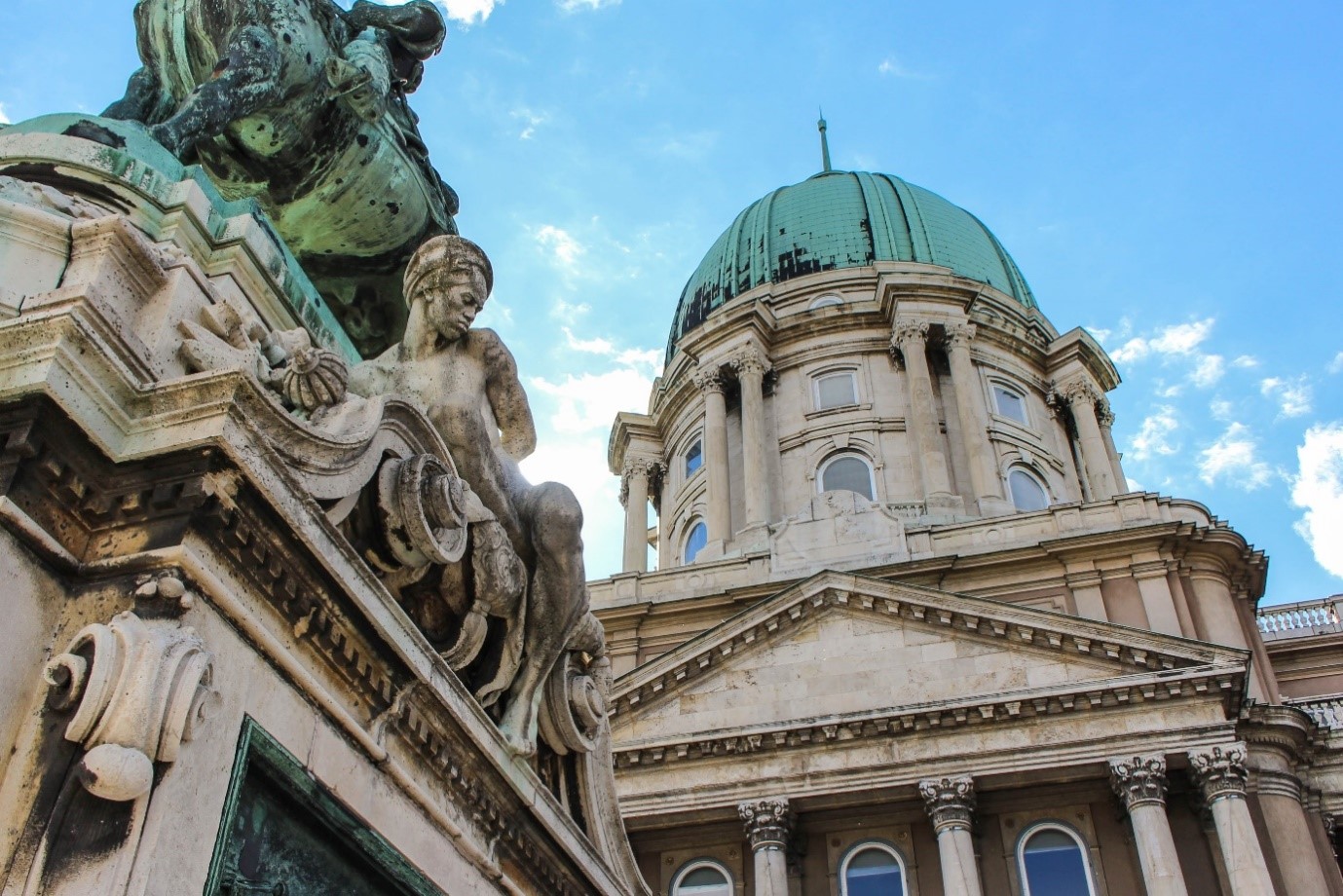
The dome of the palace seen with a figure from the statue on the Savoyai Terrace (Photo: pestbuda.hu)
The tour began on the Savoyai Terrace before the Palace building. The guide, Sára Lakatos promptly noted that the city of Zenta originally commissioned the statue of Prince Eugene of Savoy. However, once the work had been completed, the city could not afford it. After it gathering dust in József Róna's workshop for some time, eventually Franz Joseph contributed to the costs of the statue, and it was erected on the belvedere of the palace.
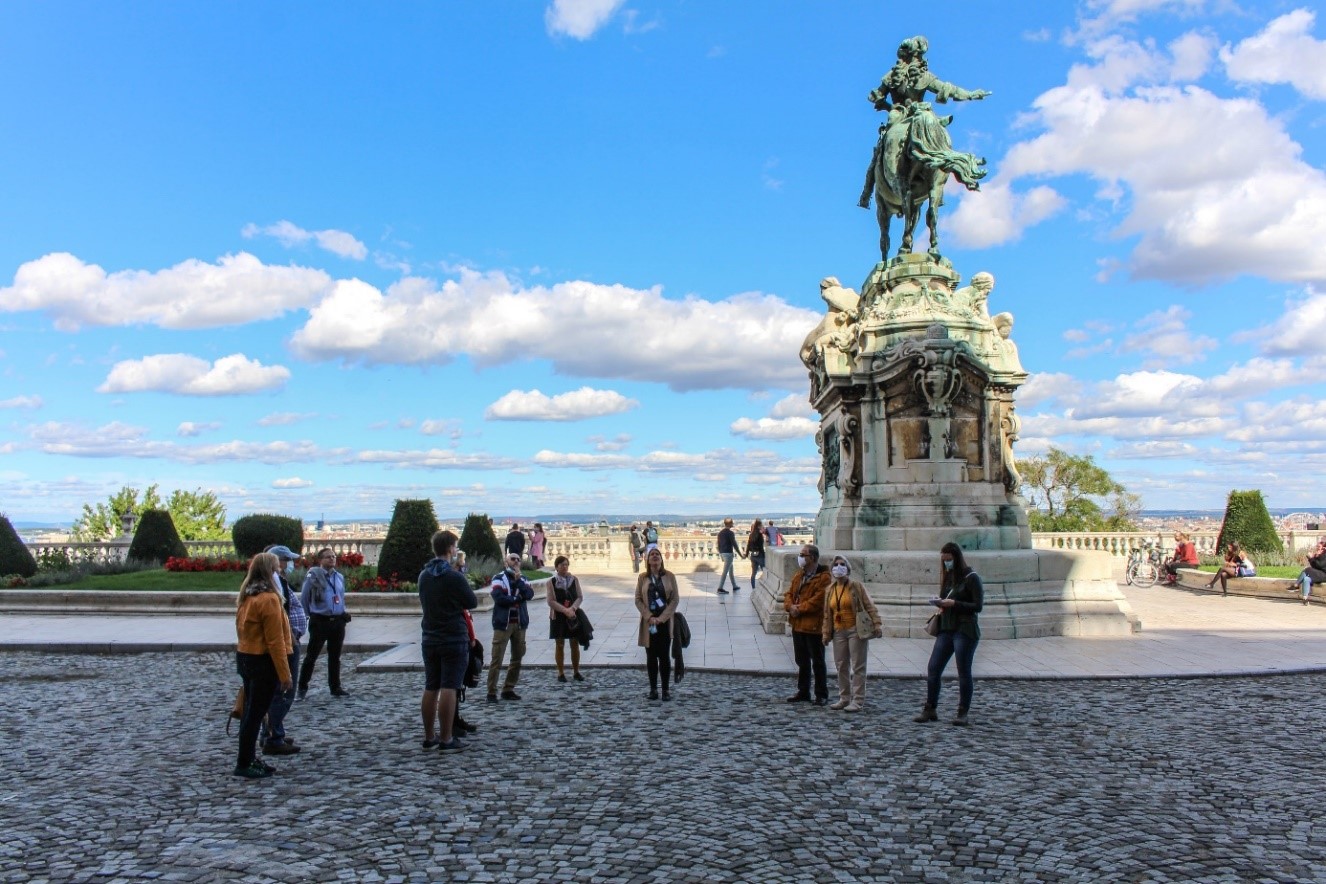
The statue of Eugene of Savoy on the terrace in front of the Royal Palace of Buda Castle (Photo: pestbuda.hu)
Sára Lakatos continued with details fo the various domes that have decorated the building throughout its history. When expanding the palace in 1891–1905, Alajos Hauszmann designed an eclectic dome, mainly in the baroque revival, art nouveau and historicist styles, which was 3-metres shorter than the current structure.
The dome was adorned with a copper copy of the Holy Crown of Hungary. Interestingly, it was the only part of the dome that survived the Second World War unscathed, the dome itself was severely damaged. The current solution was built in 1964 and has balconies and a crowsnest on top to ensure an even better view.
The walk passed the 25-square-metre painting by Gyula Benczúr entitled the Reconquest of Buda in 1896, which won a prestigious award at the Paris World Fair in 1900.
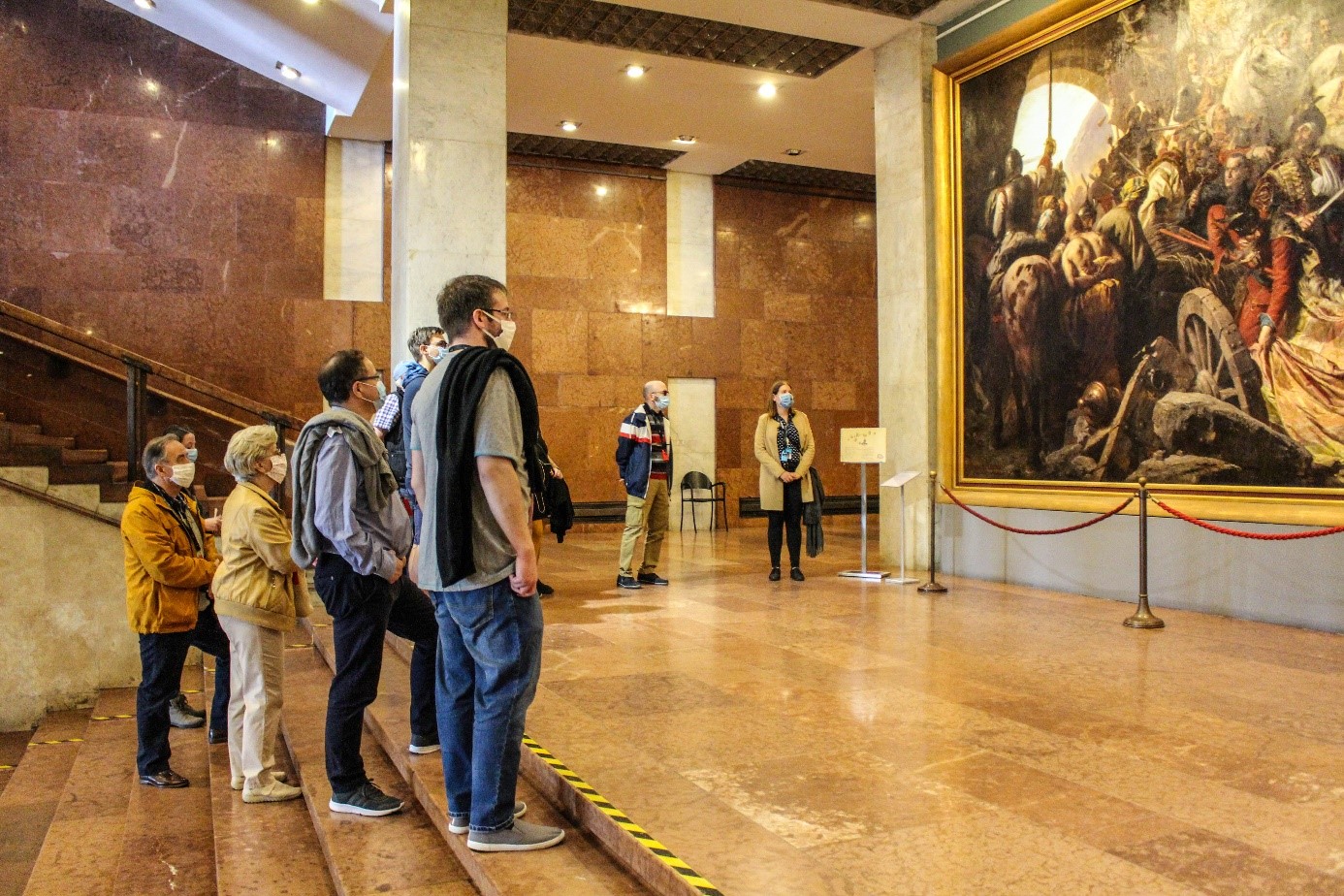 Standing before The Reconquest of Buda Castle in 1686 (Photo: pestbuda.hu)
Standing before The Reconquest of Buda Castle in 1686 (Photo: pestbuda.hu)
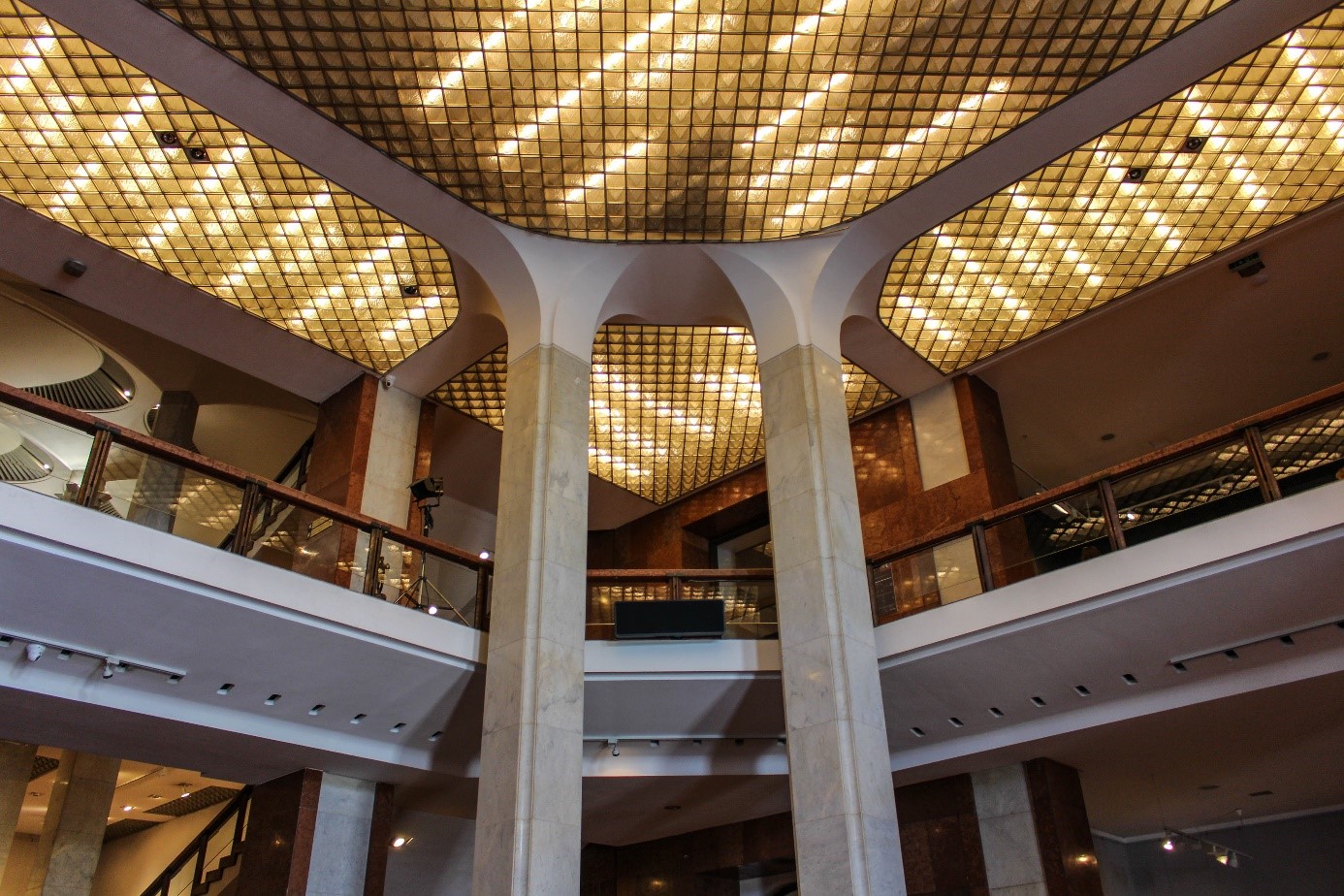 Lighting fixtures in the dome hall (Photo: pestbuda.hu)
Lighting fixtures in the dome hall (Photo: pestbuda.hu)
The tour continued to the exhibition hall that was once the Zenta room of the royal palace, where the greatest works of Hungarian historical art are on display, including Mourning László Hunyadi by Viktor Madarász and the two statues of King Matthias by János Fadrusz. One of these is the scaled version of the famous equestrian statue found in Cluj Napoca, and the other its the bronze version of the head study created for the equestrian statue. A graphic of the latter can be seen on the 1000 HUF banknote.
The scaled-down version of the equestrian statue is interesting when viewed in light of the history of the castle. It was created for one of the historical halls of the palace, the Hunyadi Room. As the Royal Palace is a symbol of Hungarian history, during the 19th-century reconstruction Alajos Hauszmann aimed to represent the great periods of Hungarian history through single rulers in the palace. Three historical halls were created named Saint Stephen's Room, Hunyadi Room and Habsburg Room.
As part of the National Hauszmann Program, Várkapitányság began the reconstruction of the southern connecting wing of the Palace in January 2020. The destroyed Saint Stephen's Room will also be recreated and opened to the public from 20 August 2021.
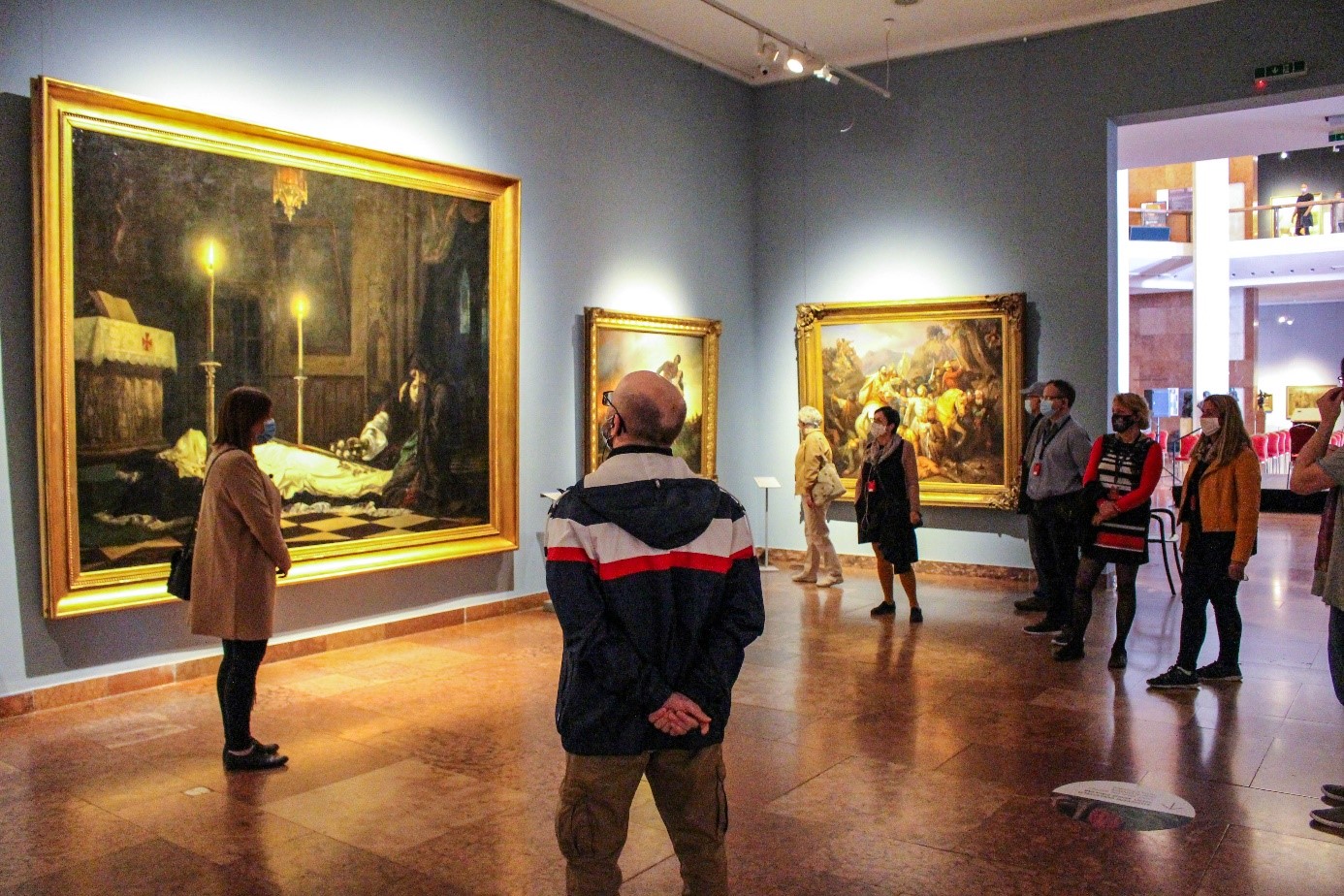
Mourning László Hunyadi by Viktor Madarász (Photo: pestbuda.hu)
Continuing along the corridors, the tour led into the Great Throne Room, otherwise known as the Ballroom. The exhibition of winged altars fits perfectly into the huge room with an ornately arched ceiling. The Hungarian National Gallery houses the largest collection of Gothic winged altars in Central Europe. In the past, the hall was used as the assembly hall of the university, and later the opening of parliament.
After the war, the room was not restored to its original style entirely. Nevertheless, the arches and certain elements of the interior architecture reflect its past. No statues or frescoes can be seen along the walls, but the baroque doors, old windows, and the grilles covering the heating solution are all original. The guide also mentioned that the massive winged altar to Saint John the Baptist from Kisszeben (Sabinov, Slovakia) was under renovation for a record-breaking 66 years, and was completed only recently.
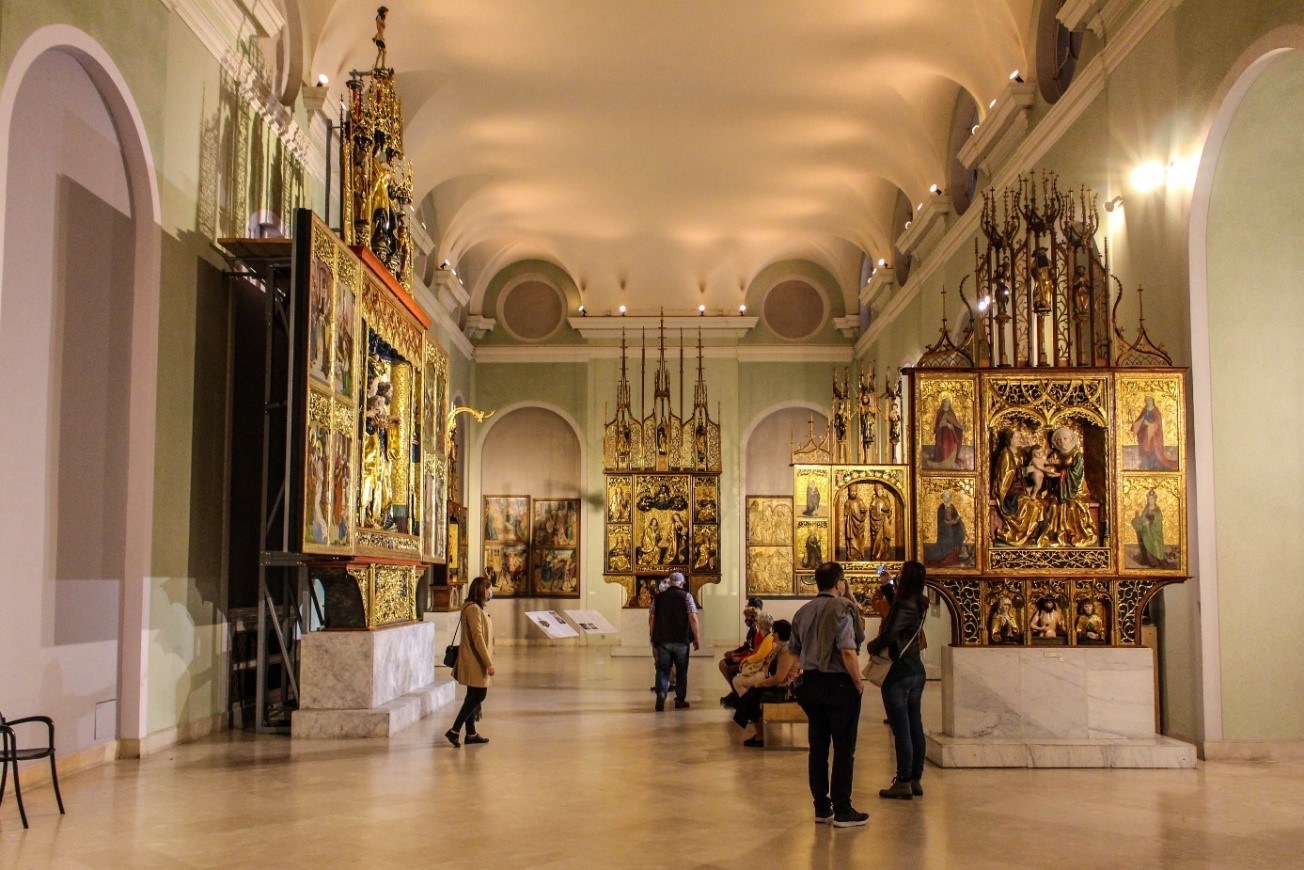 The throne room, with the winged alter to Saint John the Baptist on the left (Photo: pestbuda.hu)
The throne room, with the winged alter to Saint John the Baptist on the left (Photo: pestbuda.hu)
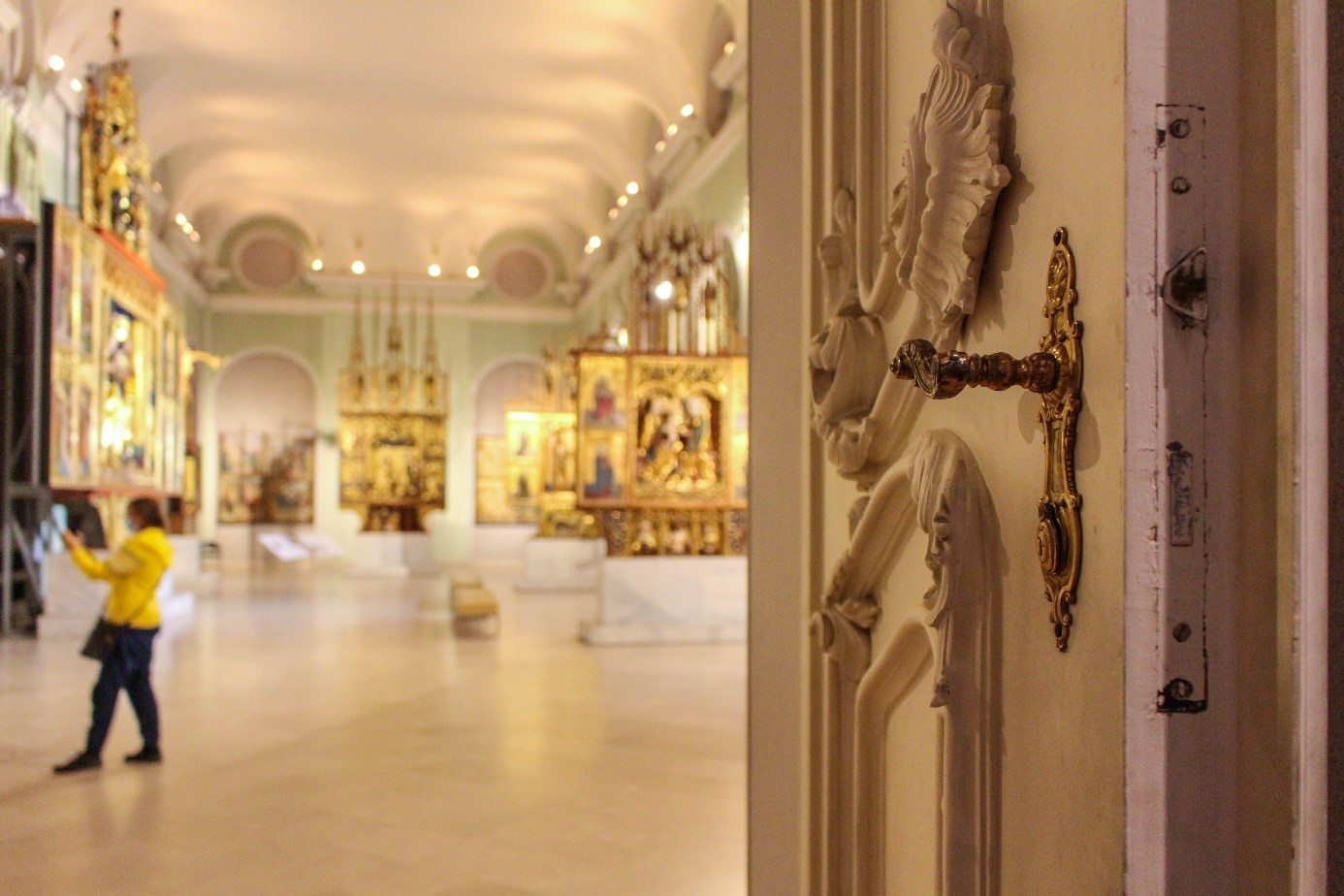 An original baroque door, with the throne room in the background (Photo: pestbuda.hu)
An original baroque door, with the throne room in the background (Photo: pestbuda.hu)
Sára Lakatosw also added that as fire is the greatest safety risk to the museum and the palace, no natural gas connection has been built into the palace. Heat is provided by district heating and air conditioning from an old cold store near Chain Bridge.
The hall under the dome houses works of art created after 1945. The György Dózsa statue by Tibor Servátius weighs 550–650 kgs and is rarely moved from its place. The large sitting black dog, one of the final works of El Kazovsky, who died in 2008 is also on display here.
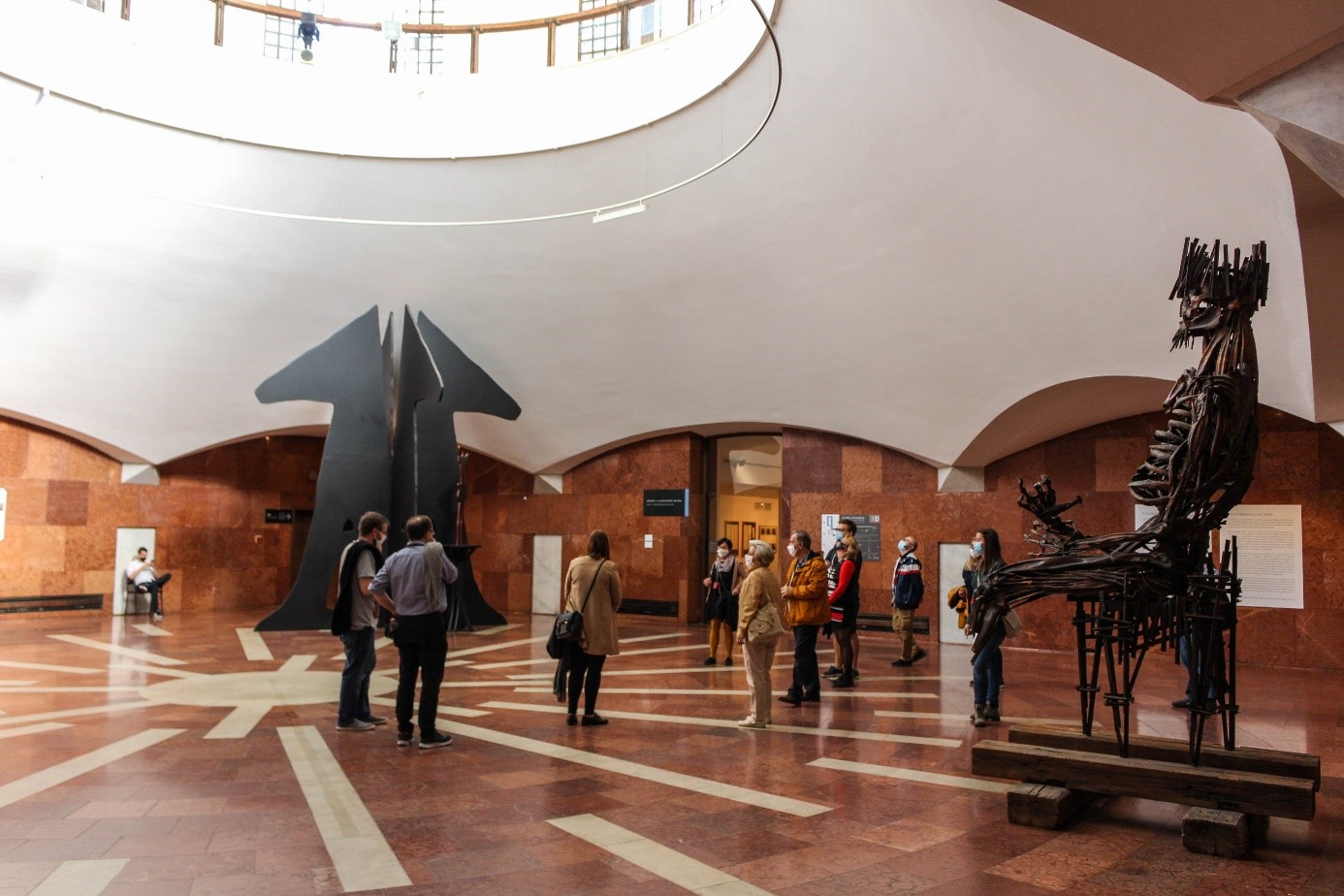 The dome hall with the statue of György Dózsa and the famous Black dog (Photo: pestbuda.hu)
The dome hall with the statue of György Dózsa and the famous Black dog (Photo: pestbuda.hu)
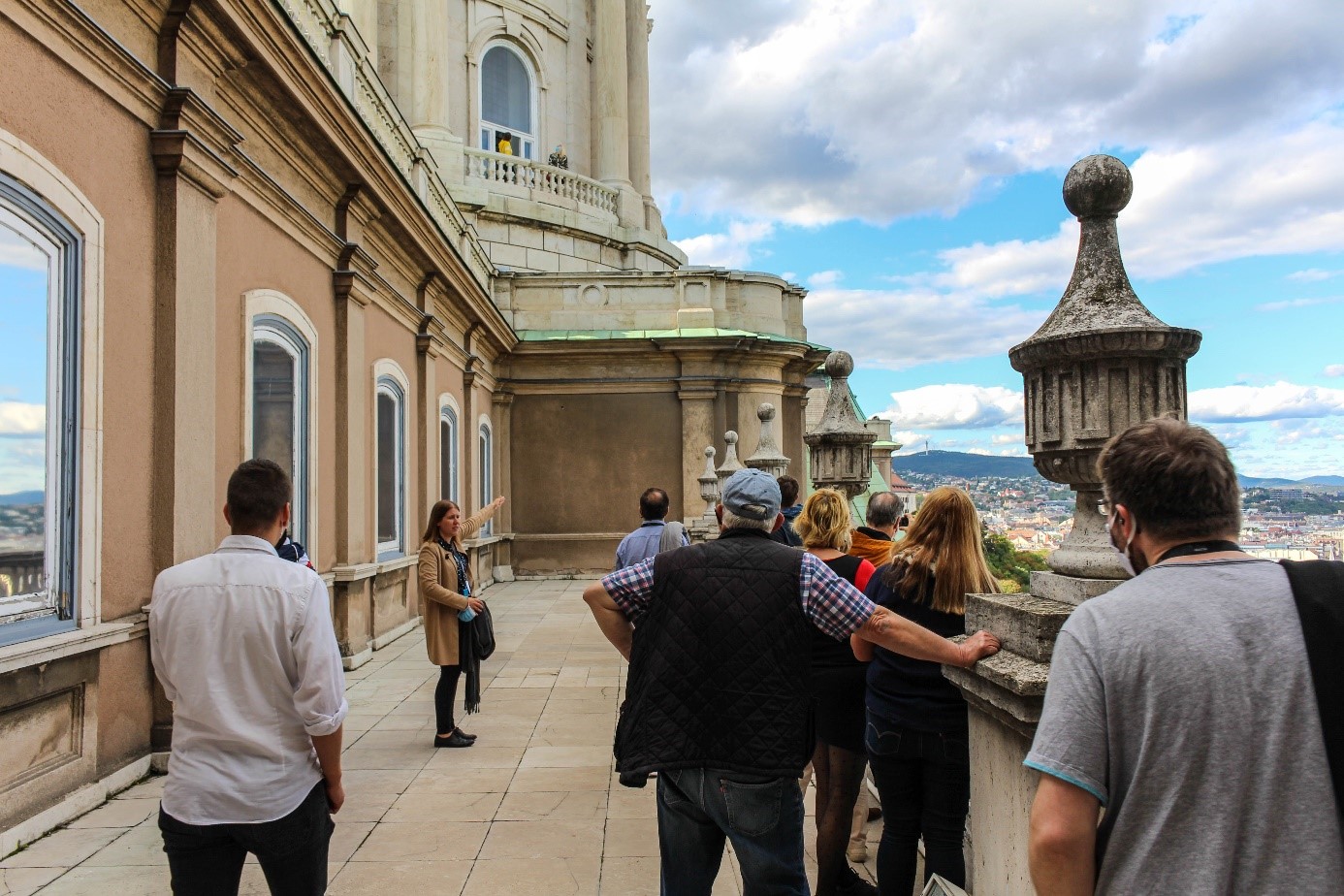 The tour guide speaking on the Panorama Terrace (Photo pestbuda.hu)
The tour guide speaking on the Panorama Terrace (Photo pestbuda.hu)
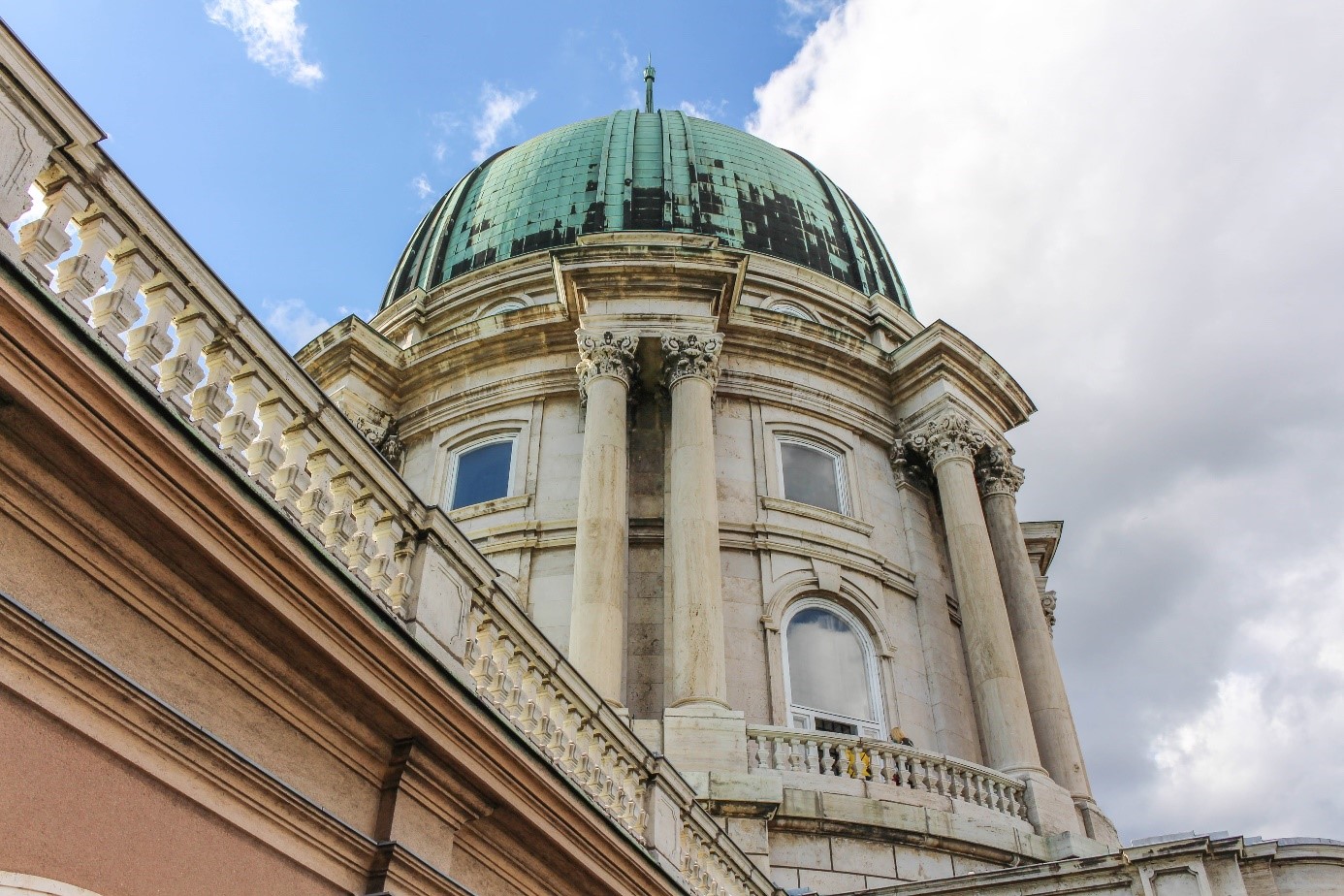 The dome of the Royal Palace of Buda Castle (Photo: pestbuda.hu)
The dome of the Royal Palace of Buda Castle (Photo: pestbuda.hu)
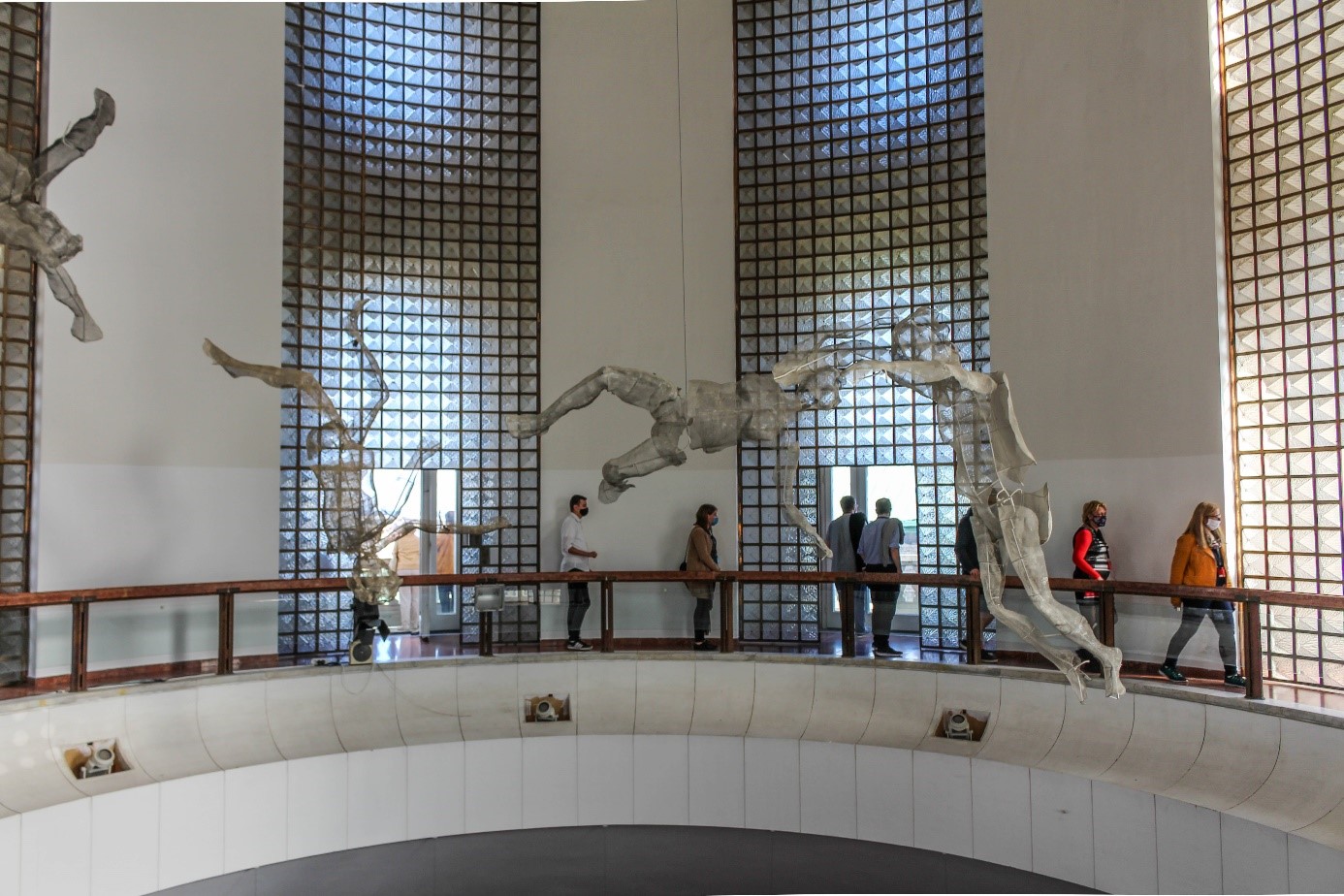 The dome with Apocalypse by Rezső Rudolf Berczeller (Photo: pestbuda.hu)
The dome with Apocalypse by Rezső Rudolf Berczeller (Photo: pestbuda.hu)
At the end of the tour, participants were invited to visit the terrace beside the dome, and the view balcony of the dome itself. The dome of the Royal Palace is in fact the fourth tallest in the country, the highest being that of Esztergom Basilica (100 metres), and the second and third those of Saint Stephen's Basilica parliament building (96 metres each).
The view is truly unique and extends miles over both Pest and Buda. The perspective of the palace complex is also inaccessible elsewhere. In clear weather, the keen-eyed can see all the way to Megyeri Bridge.
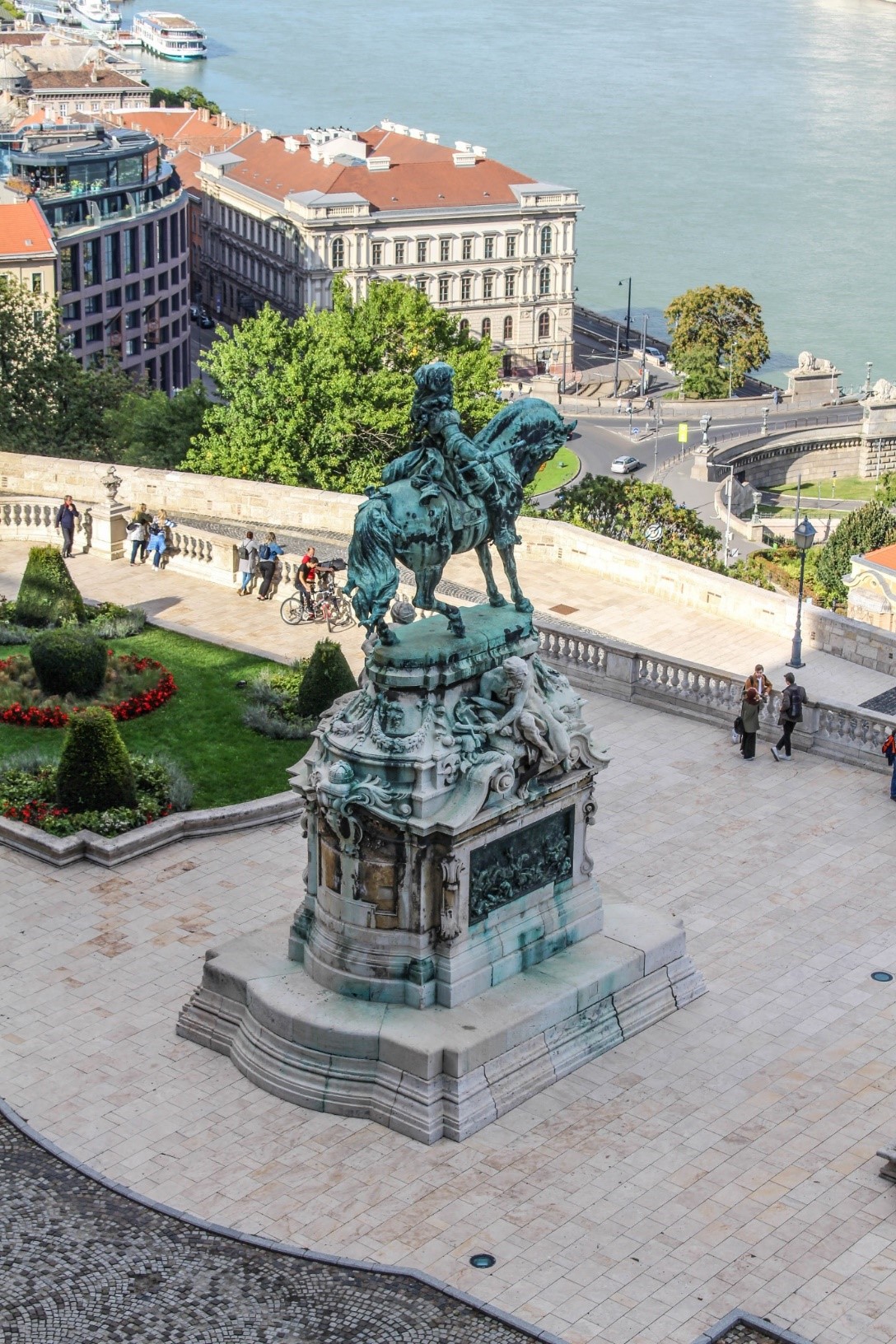
View from the dome and the statute of Eugene of Savoy on the terrace below (Photo: pestbuda.hu)
The guided tour is great even for those guests who are well acquainted with the National Gallery and its permanent exhibitions and may bring new information and hitherto undiscovered perspectives to the surface.
Naturally, visitors will only be able to return to the palace complex once the situation connected to the pandemic improves. Currently, all thematic guided tours within the palace have been cancelled due to the restrictions. The website of the Castle Garden Bazaar will publish all information about the walks once they recommence.
Cover photo: THe dome of the Royal Palace (pestbuda.hu)

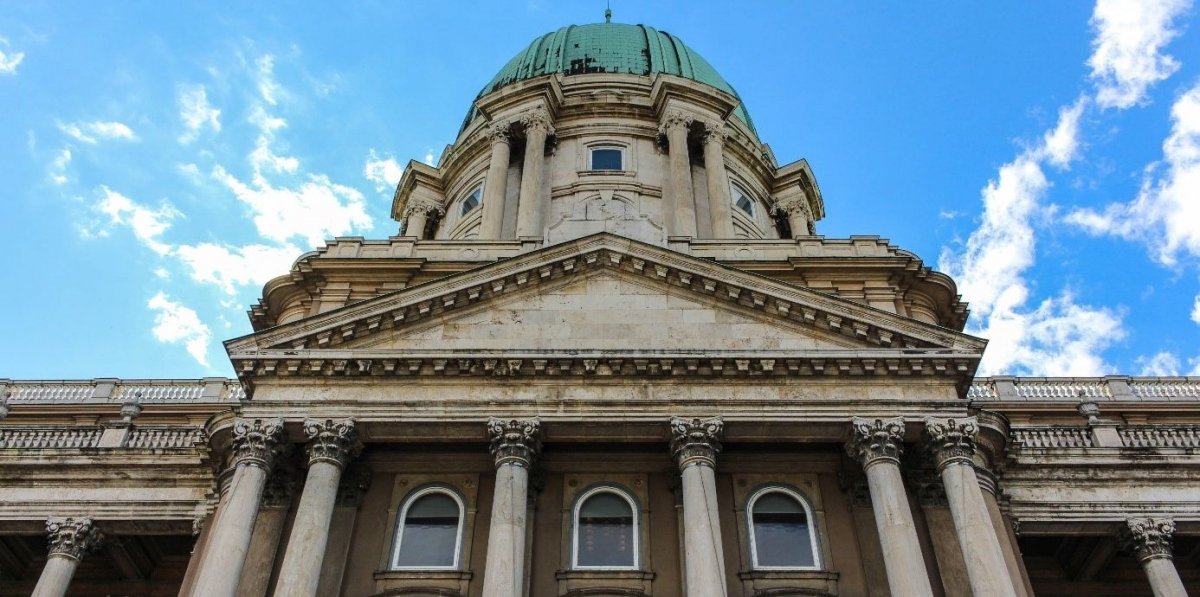



































Hozzászólások
Log in or register to comment!
Login Registration